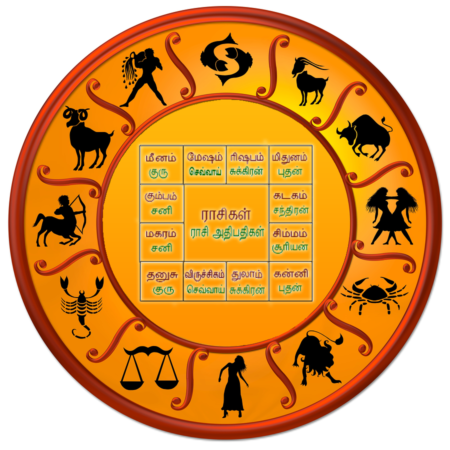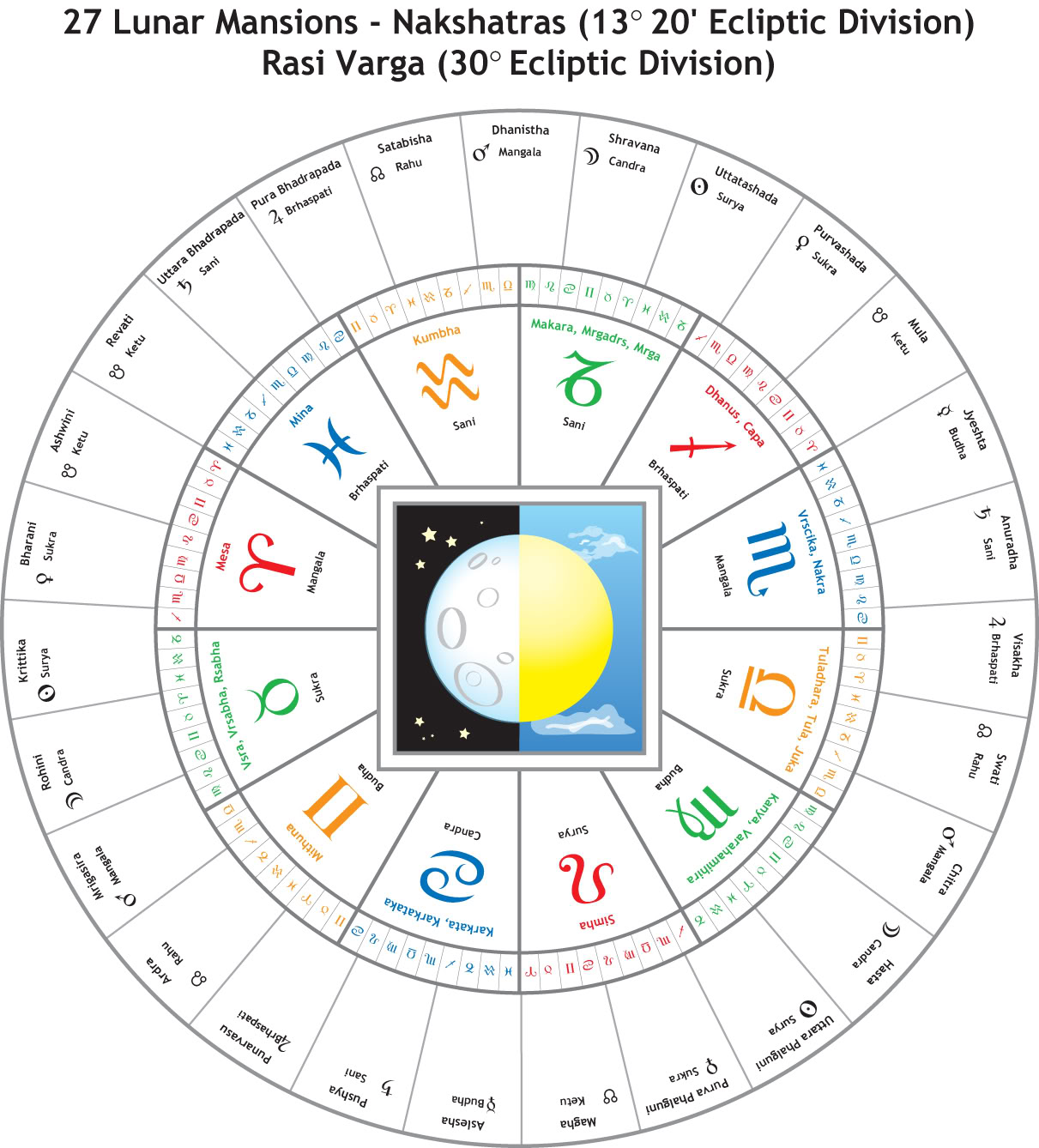Vedic and Western astrology
The main difference between Vedic and Western astrology
Vedic astrology (in sanskrit it is called Jyotish) is an old philosophy, a sub-branch of the Veda, the most ancient and sacred writings of Hinduism. Western and Vedic (or Hindu) astrology use the same Zodiacs. The main difference between them is that Western astrology uses the tropical while Vedic astrology applies the sidereal astrology. Tropical and sidereal are astrological terms used to describe two different definitions of the year. They are also used as terms for two systems of ecliptic coordinates used in astrology. Both devide the ecliptic into twelve signs named after constellations. In tropical zodiacs the beginning of the twelve signs is determined by the sun’s apparent orbit around the earth. Sidereal zodiacs are based on the physical positions of the constellations.
Traditional Hindu astrology is based on the sidereal or visible zodiacs, accounting for the shift of the equinoxes by a correction called ayanamsa. The difference between the Western and the Vedic zodiacs is currently around 24 degrees. This corresponds to a separation of about 1,700 years, when the spring equinox was approximately at the center of the constellation Aries, and the two zodiacs coincided. That is why planets often occupy different signs, and the two systems calculate the horoscope differently.
Western astrologers use one of the many house systems that places the degree of the ascendent as the beginning of the first house, with either equally or unequally sized houses while Vedic astrologers use whole sign houses, where the ascendant can fall anywhere in the first house and each house comprises all of one sign. Vedic astrologers use the same signs and planets as Western astrologers with the exception of Uranus, Pluto and Neptune, which are considered too far away to have any influence on human matters.

The Solar based and the Lunar based astrology system
Another big difference is that the Vedic system (unlike the Western one, which is solar based) is a lunar based astrological system. It consideres the Moon to be the emotional past which is the basis of karma. According to the significant role of the Moon, the Vedic system has not only one but three ascendents. Western astrologers do not generally assess Lunar strength by phase while Vedic astrologers do, and they delienate 30 different Tithis. The chart shapes of the two systems are also different. The Western chart is of round shape, the Vedic chart is square.
Western astrologers do not usually use the concept of combustion but Vedic astrologers employ it as a basic principle. A planet is weak when it is within 6 degrees of the Sun and very weak if within 3 degrees. In both Western and Vedic astrology the zodiac is divided into twelve constellations but in Vedic astrology it is further separated into 27 lunar constellations as well. These are called the Nakshatras. Vedic astrology uses the Dasha system or planetary periods.
Depending on the Nakshatra in which the Moon is found at birth, the life of a human being is divided into planetary periods. The Dasha system cannot be found in Western astrology and it is a magnificent predicting tool. With the help of it, Vedic astrology does not only characterize the psychological nature of an individual, but also gives a better understanding when certain events are inclined to take place. Vedic astrology gives a better sight of karmic tendencies and when such tendencies are plausible to manifest for a given person.
